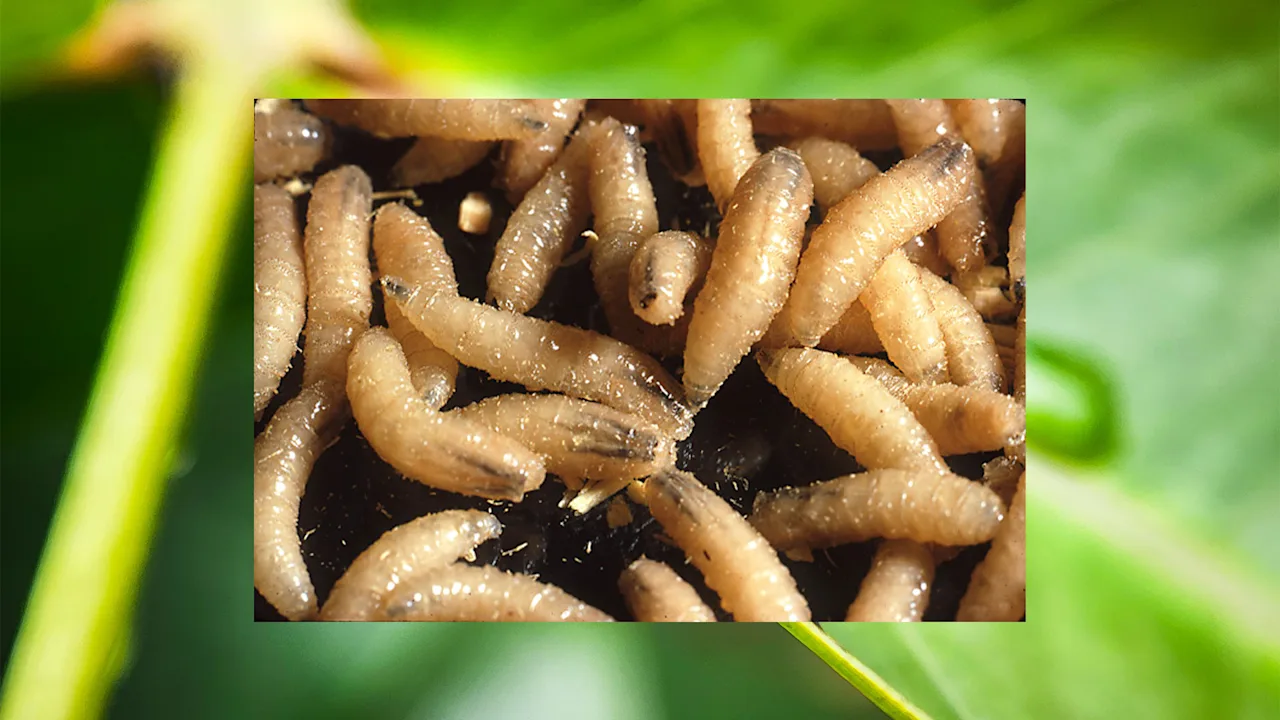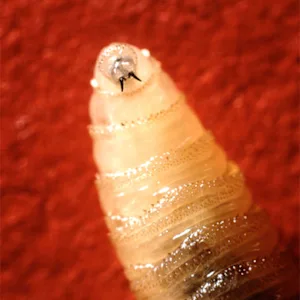What is a flesh-eating screwworm? Here’s what to know after the first confirmed human U.S. case in years

The first case of a flesh-eating maggot in years has reportedly been detected in the United States. The maggot, the larva of a New World screwworm (NWS), is unique among maggots as it does not just devour dead flesh but living flesh as well—and its infestation can be deadly to both animals and humans. Here’s what you need to know.
What’s happened?
On Sunday, the U.S. Department of Health and Human Services (HHS) confirmed the first human case of the flesh-eating New World screwworm (NWS) inside the United States, reported Reuters.
The HHS’s confirmation came weeks after the U.S. Centers for Disease Control and Prevention (CDC) was said to have confirmed the same case of New World screwworm infestation.
Fast Company reached out to HHS for comment.
That case reportedly involves a person in Maryland who had traveled from Central America to the United States. The New World screwworm is readily found in South America and the Caribbean.
It is unclear which country the person traveled from exactly, as some beef industry sources had told Reuters that the person came from Guatemala, while an HHS spokesperson said the individual came from Guatemala.
What is a New World screwworm?
The New World screwworm is a species of parasitic flies, according to the CDC. The larvae of the flies have a conical shape and have sharp teeth, which they use to eat through and burrow into flesh in a screw-like fashion.
NWS fly larvae are introduced to animal and human flesh when the NWS fly lays her eggs on the tissue surrounding wounds on animals and humans. When the eggs hatch, the larvae screw their way into the flesh, infecting it. The larva then eventually drops from the open flash and into the ground, where it burrows until it grows to become an NWS fly, and the process repeats.

A unique feature about NWS maggots is that, unlike most other maggots, they eat living flesh, not just dead flesh. They frequently infect the area around open wounds, which the flies are attracted to, but can also burrow into the eyes, nose, and mouth.
Because an NWS infestation can lead to bacterial or other infections, the infestation can be deadly to both animals and humans. In humans, an NWS infestation is serious and needs to be treated as soon as possible, sometimes with surgery to remove the often hundreds of maggots in the skin individually.
But the main threat from an infestation of NWS is to livestock.
An outbreak could devastate cattle across the country, leading to massive livestock deaths and severe economic consequences for the beef industry. Reuters notes that the U.S. Department of Agriculture estimates that an NWS outbreak in Texas could cost the state $1.8 billion in livestock deaths, medication expenses, and labor costs.
What are the symptoms of a New World screwworm infection?
According to the CDC, the symptoms of an NWS infection in a human may include
- Unexplained skin lesions (wounds or sores) that do not heal.
- Skin wounds or sores that worsen over time.
- Painful skin wounds or sores.
- Bleeding from open sores.
- Feeling larvae movement within a skin wound or sore, nose, mouth, or eyes.
- Seeing maggots around or in open sores.
- A foul-smelling odor from the site of the infestation.
The CDC says that an NWS infection can sometimes lead to secondary bacterial infections as well.
How can New World screwworm infections be prevented?
Given the threat to human life and livestock—not to mention the extreme negative impact an NWS outbreak could have on the beef economy—health officials and governments take NWS infestations very seriously.
The best way to head one off is through prevention. In the case of human NWS infestations, this includes taking precautionary measures, which include keeping wounds covered and cleaned, and wearing loose-fitting long-sleeve shirts, pants, and socks if you are traveling to a region where NWS is common.
As for keeping livestock safe from NWS outbreaks, the best preventative measures are the eradication of the New World screwworm fly so its larvae cannot infect living flesh.
The United States had previously eradicated the NWS from within its borders in the mid-twentieth century. But lately, the NWS has been moving north again from South America.
The United States and Mexico are currently working on a previously successful eradication method, which involves actually engineering hundreds of millions of New World screwworm flies. But these engineered flies would be sterile, meaning any eggs they lay would not hatch.
The idea behind these sterile engineered flies is that their introduction into the NWS population would eventually lead to that population’s eradication, as when males mate with the female flies, they would no longer produce viable eggs—ultimately leading to population collapse.
Should I be worried about the New World screwworm?
If you’re a cattle farmer, then some concern is justified. However, if you are someone who doesn’t travel to infestation areas, then it probably doesn’t make much sense to spend time fretting over the threat of the NWS to you, as the fly and its larvae are currently not widespread in the U.S.
Confirming the case of NWS infection in the Maryland individual, HHS spokesman Andrew G. Nixon told Reuters in an email that “The risk to public health in the United States from this introduction is very low.”
What's Your Reaction?
 Like
0
Like
0
 Dislike
0
Dislike
0
 Love
0
Love
0
 Funny
0
Funny
0
 Angry
0
Angry
0
 Sad
0
Sad
0
 Wow
0
Wow
0





























































































